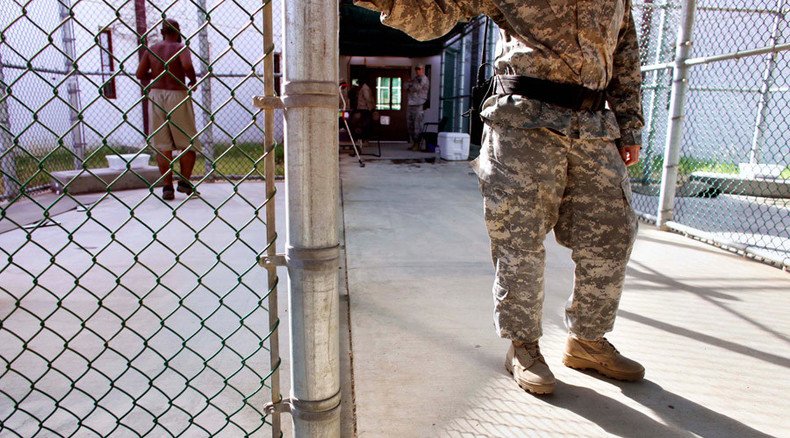US submits 8 force-feeding videos from Guantanamo Bay to DC court

The US government has turned over eight redacted video tapes to the courts which show force-feeding in practice during a mass hunger strike by detainees at the Guantanamo Bay prison in Cuba.
The footage shows, in detail, Guantanamo’s medical and security teams restraining and forcefully feeding detainee Abu Wa’el Dhiab.
The US Department of Justice (DOJ) handed over eight of 32 existing videotapes to a Washington, D.C., court on August 31, the deadline that US District Judge Gladys Kessler set in July and vowed "no extensions of time."
The videos in question are part of the evidence in Dhiab’s case. The 44-year-old was held at Guantanamo Bay from 2002 until his release to Uruguay in December 2014.
Lawyers say Gitmo prisoner on 8-year hunger strike in danger ... but military doctors disagree http://t.co/ccHi64cFlVpic.twitter.com/iX0icymtBI
— RT (@RT_com) September 14, 2015Despite being cleared for release in 2009, he continued to be held at the camp. He protested with other detainees and initiated a hunger strike in early 2013, prompting the use of force feeding. At the hunger strike’s zenith in 2013, up to 100 inmates were refusing to eat in protest of their indefinite detention.
Dhiab’s attorneys in the case declined to comment on the videos’ content under classification restrictions, but they did confirm that Dhiab is seen being dragged from his cell by Guantanamo staff, which used a tackle-and-shackle technique. His limbs and head were then restrained as Dhiab was fed through a tube that ran through his nose to his stomach.
READ MORE: Guantanamo force feeding videos must be released – US judge
The lawyers for Dhiab insist that the videotapes have been edited and that identifying information about Guantanamo personnel has been removed, according to the newspaper.
“If the American people could see the force-feeding tapes I’ve watched, they would understand that abuse in Guantanamo is not just in the ‘bad old days’ of the past, but continues right up to the present,” Cori Crider, who represents Dhiab, was cited by the Guardian as saying. Crider called the scenes depicted on the videotapes “a national scandal.”
Federal court dismisses govt appeal to block release of Gitmo force-feeding videos http://t.co/SkbLl3MgHTpic.twitter.com/xAYpU4RO7e
— RT America (@RT_America) May 30, 2015News of the videos’ release to the court comes almost a year after Judge Kessler ordered the disclosure of the eight tapes in October 2014, rejecting the government’s argument that the tapes are classified and that releasing them would harm national security. The judge said the arguments were “unacceptably vague, speculative,” or “just plain implausible”.
In August 2015, the DOJ reportedly asked Kessler to “reconsider” her order to release tapes.
Kessler has also ordered the videos to be made public, with redactions to protect the identity of Guantanamo guards; however the ruling was appealed by the government in court.
.@Krhawkins5@Reprieve Yes. But it also appears DOJ will try to claw back ground - ask Kessler to reconsider release order and censor it all
— Cori Crider (@cori_crider) July 9, 2015This October, attorneys for the DOJ and for Dhiab are reportedly set to discuss the videos’ public disclosure with the judge. The DOJ keeps opposing their release, having previously argued that the potential threat to national security outweighs public interest in the case.
The force-feeding practice has been widely criticized by human rights groups, but US officials insist that it is necessary to prevent the prisoners from harming themselves from “non-religious fasting,” as the hunger strikes are termed. Dhiab claimed that he was force-fed 1,300 times during his incarceration at Guantanamo.
The US currently holds 116 prisoners at the detention camp.
LISTEN MORE:












